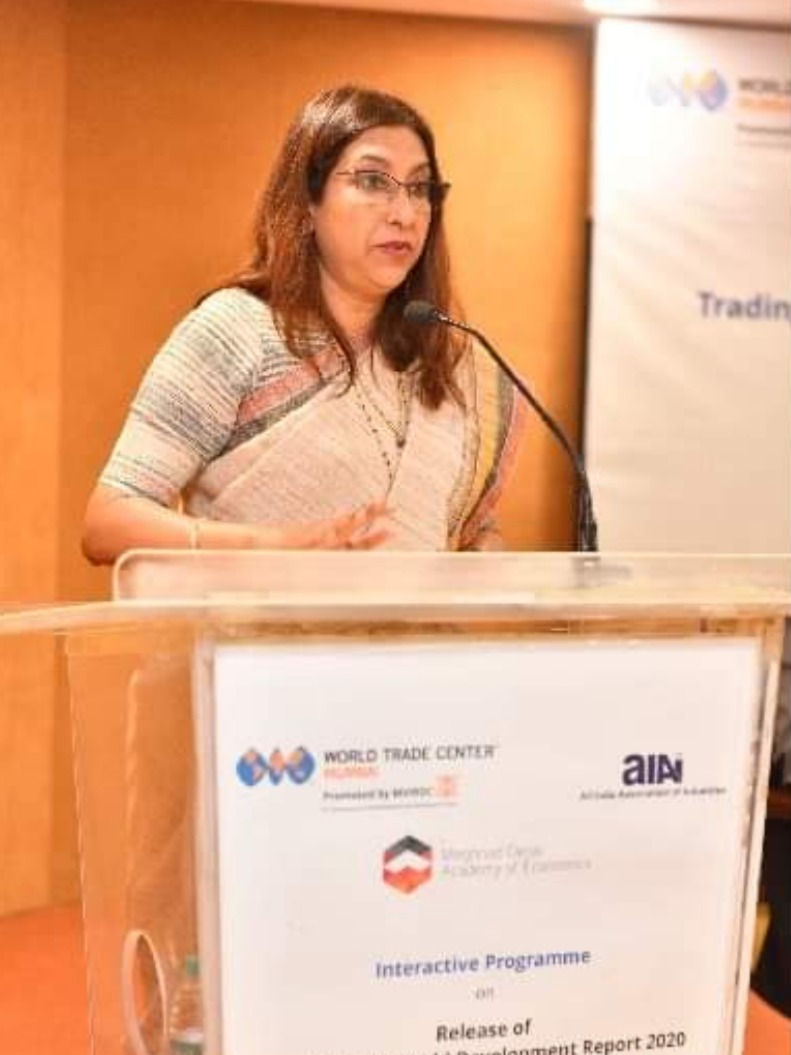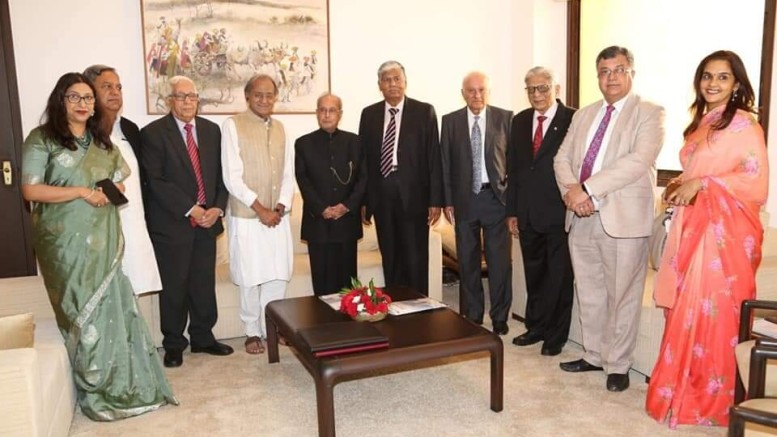
Ms. Rupa Naik, Senior Director, MVIRDC World Trade Center Mumbai
Trade surplus doubles in four sectors, while India becomes net exporter in two sectors.
MUMBAI, 8 SEPTEMBER, 2020 (GPN): At a time when Government of India is taking various measures to transform India into a self-reliant economy, MVIRDC World Trade Center Mumbai has identified top performing sectors where Government of India can provide targeted policy incentives to consolidate recent gains in exports.
Our analysis of foreign trade data on 101 goods shows that exports in 22 goods posted a double digit compounded annual growth rate (CAGR) between 2015-16 and 2019-20. Of these 22 sectors, India’s trade surplus in agrochemicals, dyes, ceramic products and packaging materials increased during this period. Cumulative trade surplus in these four sectors doubled from USD 3.1 billion to USD 6.1 billion during this period, led by double digit growth in exports.

Ms. Rupa Naik, Senior Director, MVIRDC World Trade Center Mumbai -File Photo GPN
Speaking about the outcome of this analysis, Ms. Rupa Naik, Senior Director, MVIRDC World Trade Center Mumbai said, “Export potential in these 22 sectors can be strengthened under the Aatmanirbhar programme. Special policy thrust can be given for agrochemicals, dyes, ceramic products and packaging materials industries where India’s net exports grew significantly. Government should identify MSME clusters in these segments, set up Design Institutes to handhold them, train them on global quality standards, increase testing & certification facilities and address unmet credit needs. We need focused intervention to strengthen the already existing competitiveness in these sectors.”
Apart from these four sectors, India has transformed trade deficit into surplus in essential oils and office equipments because of double digit exports in these two sectors. India’s trade balance in essential oils improved from USD (-) 19 million in 2015-16 to USD 41 million since 2019-20. In the case of office equipments, trade balance improved from USD (-) 35 million to USD 104 million (see the table below).
“Government should declare these six sectors as champion sectors and enhance their global competitiveness through targeted measures. Also, government can protect these sectors from imports by increasing import duty for the next few years,” Ms. Naik added.
This analysis is based on the last four-year foreign trade performance in 101 goods that account for 84% of the country’s merchandise exports. The result of this analysis will help identify high growth sectors for providing production linked incentives and discouraging imports by adopting phased manufacturing programme (PMP). Oil and gas is excluded from this analysis as India is largely dependent on imports in this sector. These 101 goods belong to agriculture and allied industries, handicrafts, textiles, gems and jewllery, leather, pharmaceuticals, chemicals and engineering sectors.
Our analysis shows that India’s exports of these 101 goods grew at a CAGR of 4% to USD 261 billion in 2019-20 from USD 223 billion in 2015-16. Out of these 101 goods, there are 22 well performing sectors where exports have grown in double digit, and trade deficit has declined remarkably. Among these 22 items, India incurs trade deficit (net importer) in 14 goods. Cumulative export of these 22 goods grew 17% and this helped reduce trade deficit to USD 37 billion from USD 44 billion during this period. Share of these items in India’s trade deficit declined from 37% to 23% since 2015-16 as can be seen from the following table.
Among them, the topmost good is bulk mineral and ores, which grew 31% in the last four years. Export in this segment is largely driven by shipment of iron ore, because of improvement in international price of ore. Export of silver has also grown in double digit, but the total value of silver export is USD 10 million, which is negligible given the overall merchandise export of USD 313 billion.
Apart from these two goods, the other 20 goods are largely manufactured items such as rail transport goods, electrical machinery, office equipments, accumulators & batteries, lead and allied articles, ceramic products etc. In some of these 22 sectors, imports have also grown considerably along with exports, thereby causing increase in trade deficit. These sectors are electrical machinery, accumulators & batteries, graphite, explosives & accessories, electronic instruments, medical and scientific instruments.
Falling trade surplus in Labour Intensive Manufacturing
Our analysis also found that India’s trade surplus in five labour intensive manufactured products declined from USD 20.5 billion in 2015-16 to USD 18.2 billion in 2019-20 largely because of poor export performance and sharp growth in imports. These five products include readymade garments, leather goods, footwear of rubber, canvass and leather and carpets. Cumulative exports of these six products declined 2% in the last four years, while imports grew 15% to USD 2.04 billion (see the table below).
Speaking on the need to revive exports in these sectors, Ms. Naik said, “Most of these items fall under export-oriented sectors; but their share in overall merchandise exports declined from 8% to 6.5% in the last four years. Also, imports in these goods have been increasing in recent years and if unchecked, rising imports may threaten the viability of the local units.”
These are labour intensive sectors and hence India needs to examine the reasons for decline in exports and rising imports. The government may extend production linked incentives to these sectors to encourage production and prevent job losses. Also, India needs to understand global competition for these products and take steps to overcome competition through interventions such as technology upgradation, increasing scale of operations, setting up common facility centres, reskilling labour etc.
These measures will go a long way in reducing imports and making India self-reliant in the identified sectors.


Be the first to comment on "Aatmanirbhar programme can focus on 22 high growth export sectors"